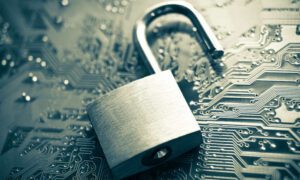The dental field is currently undergoing a period of rapid change and development. There are dozens of new inventions and techniques that are helping dentists give their patients an advanced level of care and the best chance at achieving a healthy smile.
Dr. Kami Hoss, a graduate of the UCLA dental program, explores 10 of these exciting new technologies and explains how they can make dentistry quicker, easier, and safer for patients everywhere.
1. 3-D Printing
In the past, the process of getting a crown or dentures has been long and tedious and has required more than one appointment to achieve the final results. 3-D printing has eliminated the step of the temporary crown or denture, making it easy for dental patients to get their final replacement while they are still sitting in the dentist’s chair.
One popular suite of equipment is the CEREC crown. These crowns are typically made of strong ceramic material. The dentist designs, creates, and installs them on the same day, using advanced computer-assisted technology. Skipping the second appointment is a huge help for patients since temporary crowns often fall out and force patients back into the chair between appointments. Having a permanent crown on the first try is a major advantage.
2. Artificial Intelligence
AI software can help dentists discover the best ways to treat their patients. Dental AI programs can analyze healthcare data, treatment techniques, and research findings to find the best way to treat a patient with the highest probability of success. When combined with advanced imaging techniques, AI dentistry can provide excellent care.
3. Smart Toothbrushes
Today, even our toothbrushes have become high-tech equipment. There are several brands of smart toothbrushes on the market. Some have the ability to tell the patient whether they are brushing properly. These are especially helpful for children who are just learning how to brush their teeth.
4. New Treatments for Gum Disease
Gum disease treatment has become less invasive with the advent of new regenerative procedures. When patients have gum disease that turns into periodontal disease, the gums separate from the teeth. As the disease progresses, the bone that anchors the teeth wears away and teeth are lost.
The new treatment involves surgically implanting a film between the tooth and inflamed gum. The membrane keeps the infection away from the tooth, applying medication to the diseased gum tissue.
5. Augmented Reality
Augmented reality or AR technology is beginning to have an impact on the dental profession. It is especially useful in institutions like the UCLA dental program, where procedures can be demonstrated and practiced.
6. Teledentistry
Together with telemedicine, teledentistry has become more popular during the COVID-19 pandemic. Many patients feel reluctant to visit a dentist in person, but some exams can be done remotely even though patients have to visit the office to have any work done. Teledentistry is especially useful for rural and underserved populations, as well as patients with special needs.
7. Intra-Oral Cameras
Dentists are beginning to use intra-oral cameras to get better views of their patients’ teeth. This is especially helpful for children, who may have difficulty keeping their mouths open wide enough to have their teeth examined.
8. Virtual Reality
Virtual reality has been successfully used in dental offices to help nervous patients stay calm. The immersive environment allows patients to take their minds off what is happening in their mouth and may lead to more comfortable treatment.
This technology is also extremely useful in dental education. Dental surgeries can be filmed in VR, enabling students to get a close-up view of the procedure without having to crowd around the teaching dentist.
9. Lasers
Lasers have become increasingly popular in dental treatment. The technology has developed a great deal over the past 30 years since it was first introduced in the dentist’s chair. Laser dentistry can treat hypersensitivity, tooth decay, and gum disease, as well as whitening teeth.
In the past, only the dental explorer tool was able to find cavities. Today, dentists are using lasers to accomplish the same task without a physical tool. Lasers are more precise than the explorer and are more comfortable for the patient as well.
10. Digital X-Rays
Digital x-rays are easier to produce and expose patients to less dangerous radiation than traditional x-rays. It is easier to put the images on a computer screen, enabling the dentist and patient to look at them together to plan treatment. Another advantage of digital x-rays is that they can be sent easily between offices.
Dental Advancements Help Patients
Patients appreciate advances in dental technology because they want their appointments to be shorter and less painful. Dentists appreciate doing things efficiently with less discomfort for their patients. Technology can help both dentists and patients achieve better results with their home care and in-office procedures.
Dr. Kami Hoss believes that the dental field is enhanced by the continuing growth of technology and that patients will benefit even more as the years go by.





























